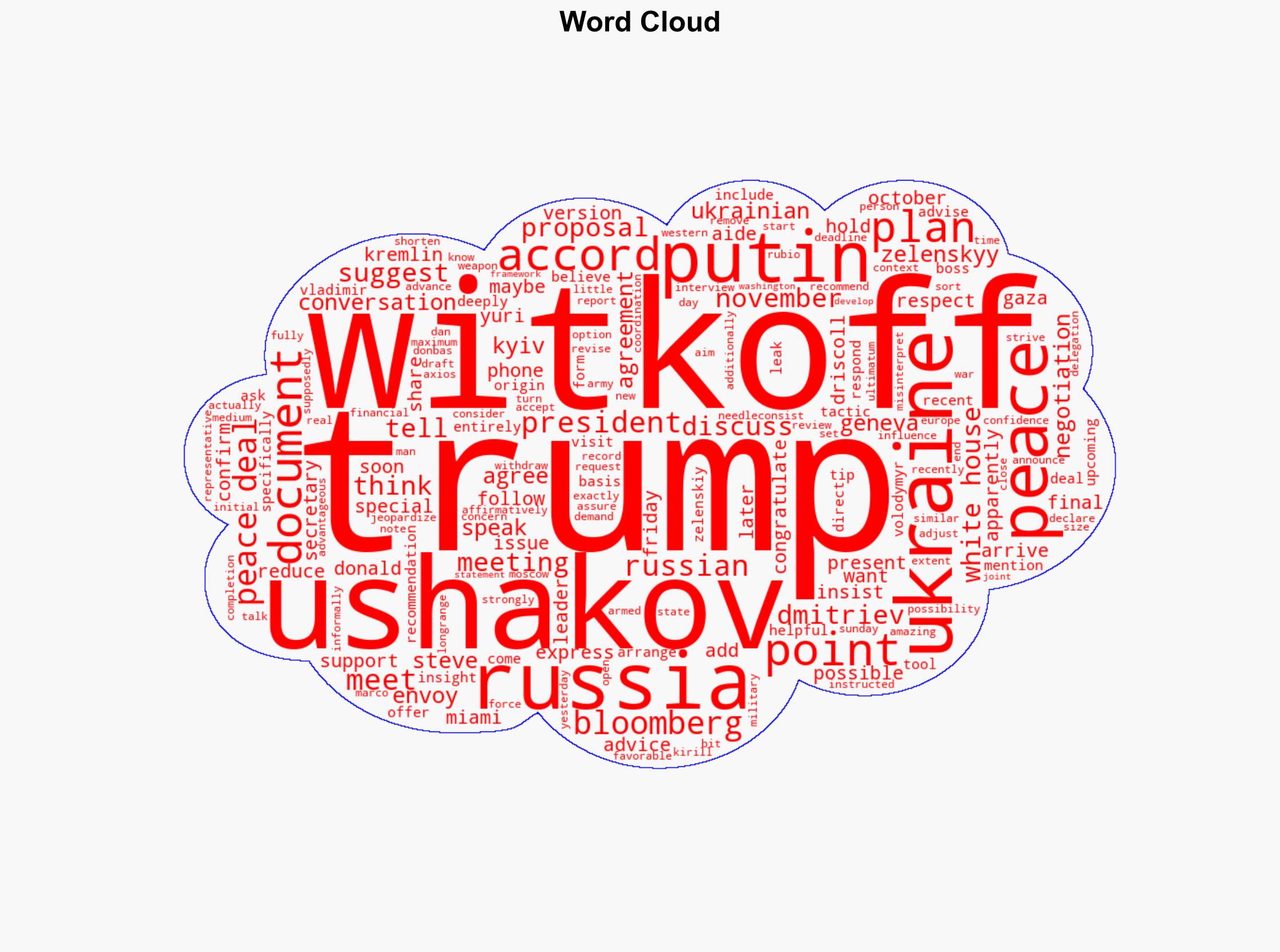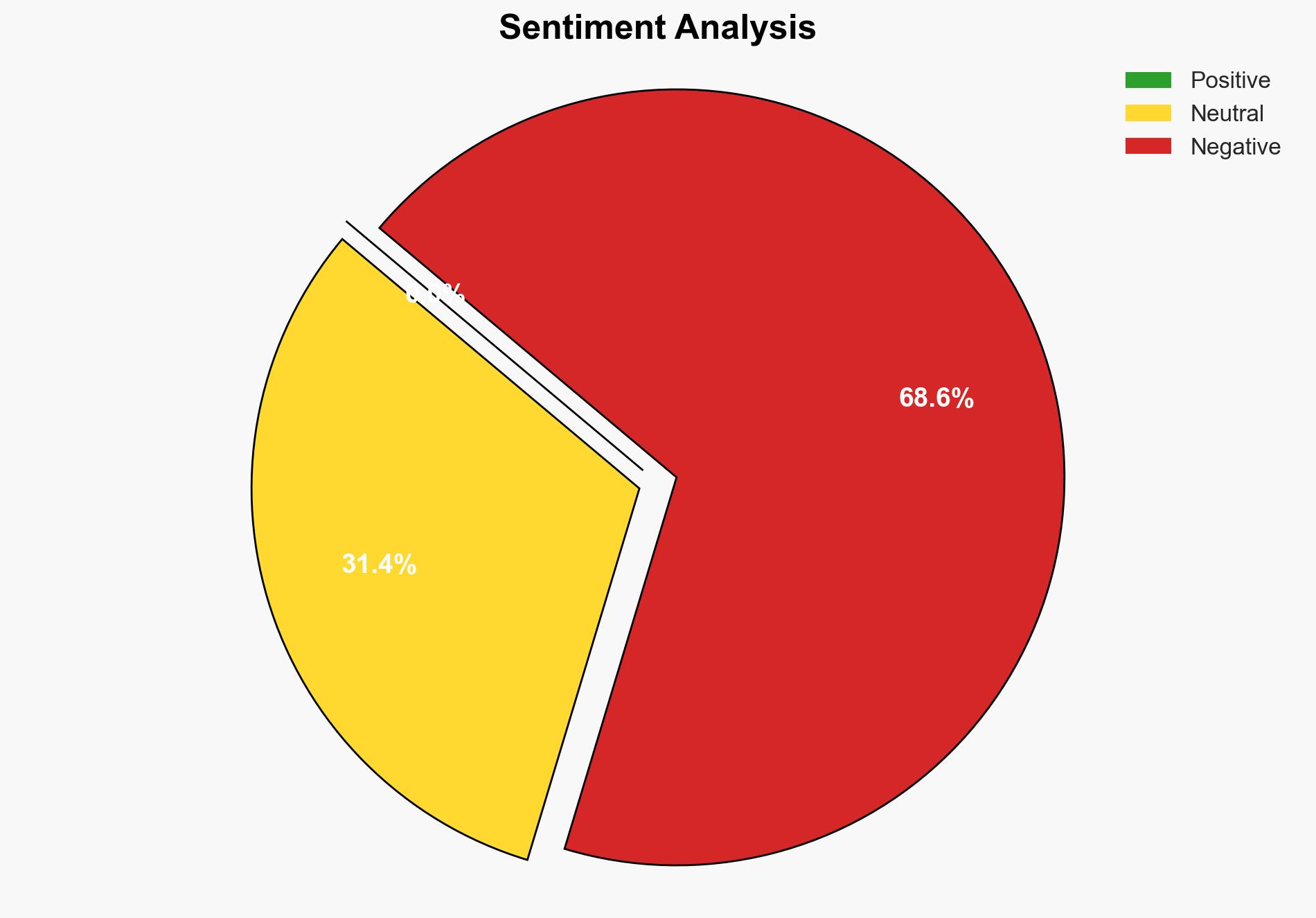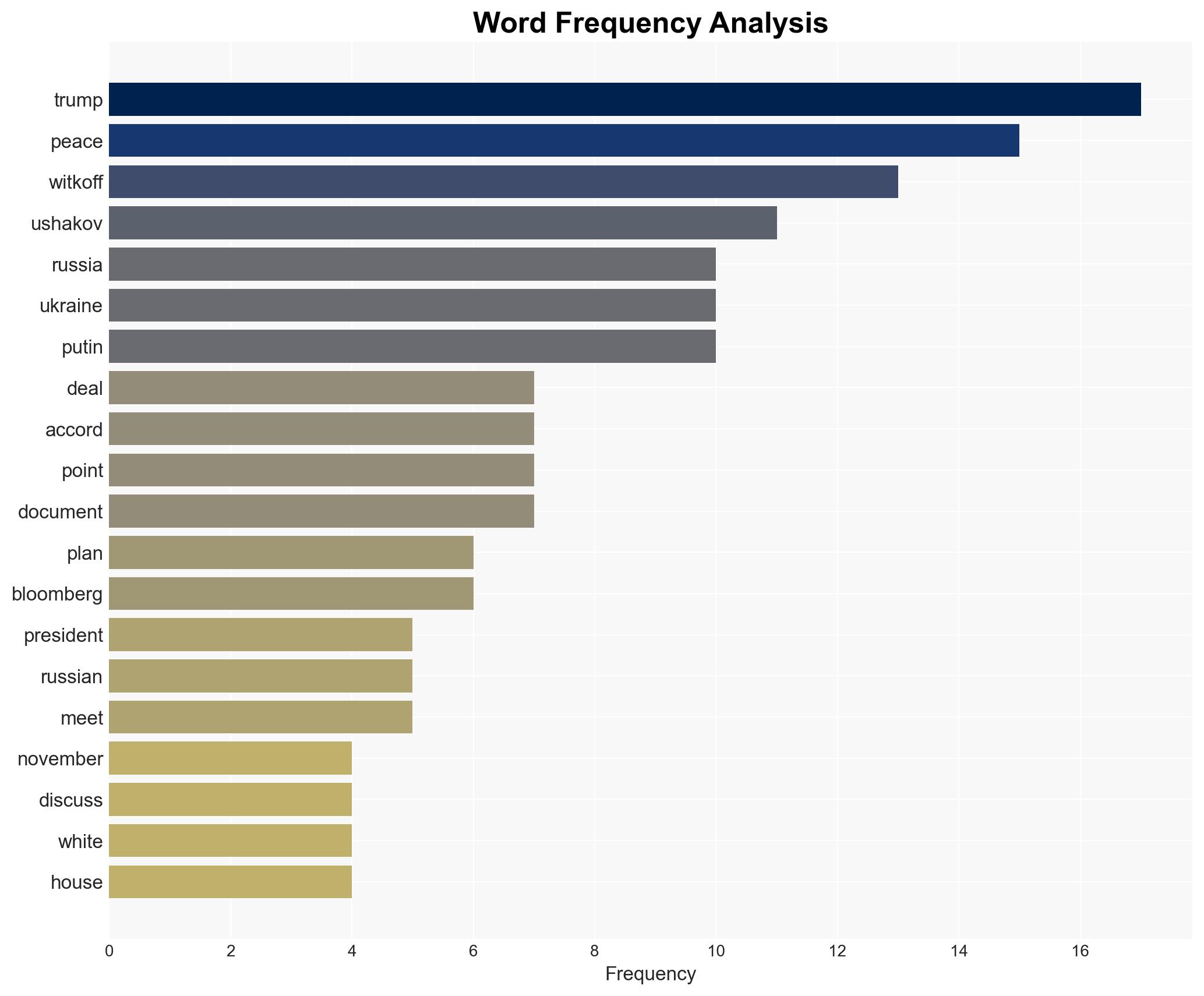Witkoff Counsels Moscow on Presenting Ukraine Peace Proposal to Trump
Published on: 2025-11-26
AI-powered OSINT brief from verified open sources. Automated NLP signal extraction with human verification. See our Methodology and Why WorldWideWatchers.
Intelligence Report:
1. BLUF (Bottom Line Up Front)
There is moderate confidence that the peace plan presented to President Trump is primarily a Russian initiative aimed at securing favorable terms for Russia in the Ukraine conflict. The most supported hypothesis suggests that Russia is leveraging diplomatic channels to influence U.S. policy towards Ukraine. Recommended actions include heightened scrutiny of diplomatic engagements involving Russia and the U.S., and reinforcing support for Ukraine in international forums.
2. Competing Hypotheses
Hypothesis 1: The peace plan is a Russian-origin initiative designed to manipulate U.S. foreign policy to favor Russia’s strategic interests in Ukraine.
Hypothesis 2: The peace plan is a genuine collaborative effort involving multiple stakeholders, including the U.S., to achieve a balanced resolution to the Ukraine conflict.
Hypothesis 1 is more likely due to the consistent pattern of Russian diplomatic maneuvers to secure advantageous positions in international conflicts, as well as the specific advice given by Witkoff to align the plan with Russian interests.
3. Key Assumptions and Red Flags
Assumptions include the belief that Russia’s primary goal is to secure a favorable outcome in Ukraine and that the U.S. administration is open to negotiation. Red flags include the potential for misinformation or manipulation by Russian officials and the lack of transparency in the negotiation process. Deception indicators are present in the form of Russia’s insistence on specific terms and the potential misrepresentation of the plan’s origins.
4. Implications and Strategic Risks
The primary risk is the potential for the U.S. to inadvertently support a peace plan that undermines Ukraine’s sovereignty and territorial integrity. This could lead to political fallout, weakening of U.S. alliances in Europe, and emboldening of Russian aggression. Additionally, there is a risk of cyber and informational warfare tactics being employed by Russia to shape public perception and diplomatic outcomes.
5. Recommendations and Outlook
- Increase intelligence monitoring of Russian diplomatic activities and communications related to the Ukraine conflict.
- Engage with European allies to present a unified stance on Ukraine’s sovereignty and territorial integrity.
- Best-case scenario: A balanced peace agreement is reached that respects Ukraine’s borders and sovereignty.
- Worst-case scenario: The U.S. inadvertently supports a plan that weakens Ukraine and strengthens Russia’s position.
- Most-likely scenario: Continued diplomatic maneuvering by Russia to secure favorable terms, with limited progress towards a genuine peace agreement.
6. Key Individuals and Entities
Steve Witkoff, Yuri Ushakov, Vladimir Putin, Donald Trump, Volodymyr Zelenskyy, Kirill Dmitriev, Marco Rubio, Dan Driscoll.
7. Thematic Tags
Regional Focus, Regional Focus: Eastern Europe, Russia, Ukraine, United States
Structured Analytic Techniques Applied
- Causal Layered Analysis (CLA): Analyze events across surface happenings, systems, worldviews, and myths.
- Cross-Impact Simulation: Model ripple effects across neighboring states, conflicts, or economic dependencies.
- Scenario Generation: Explore divergent futures under varying assumptions to identify plausible paths.
- Narrative Pattern Analysis: Deconstruct and track propaganda or influence narratives.
Explore more:
Regional Focus Briefs ·
Daily Summary ·
Support us





